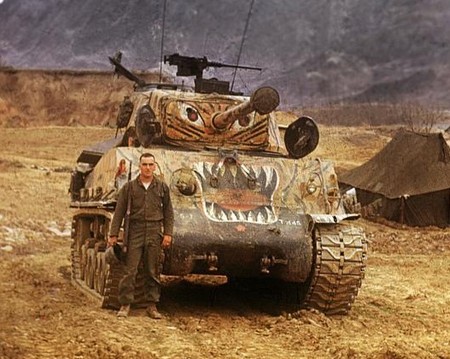
Members of the aviation enthusiast community will be familiar with the concept of the Tiger Meet. Being a nice, ferocious type kitty, tigers keep showing up as emblems on squadron insignia. (Why honey badgers don’t seem common, I’m not sure. I suggest a petition. This is, however, beside the point). Anyway, the gist of it is that any squadron from any nation which has a tiger in its logo and wants to, paints up their airplane in a special Tiger Meet paint scheme. And then they are judged to see which one is best-painted. The rules can be loosened a little, one can occasionally also find panthers, leopards and the like represented as well.
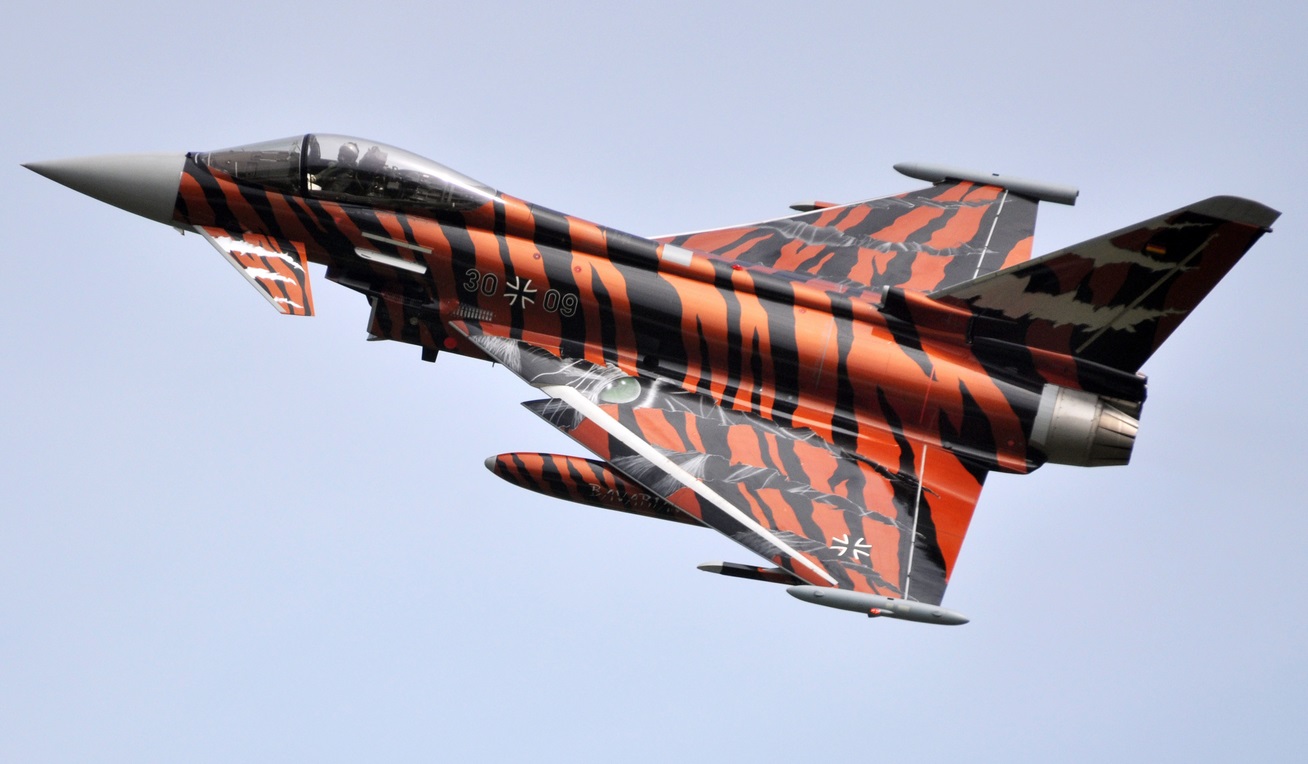
We don’t have Tiger Meets with tanks. Probably, for starters, because getting a group of tanks from a score of countries together at the same time is a bit tricky. Then, also, tanks tend to get dirty more easily, and they have a lot more fiddly bits that one has to paint around. Once in a blue moon, you may see a tank painted up for a specific commemoration, such as a regimental anniversary (as this Strv-103) or just to celebrate FREEDOM!!!! (though this tank hasn’t moved in a few years it seems.)
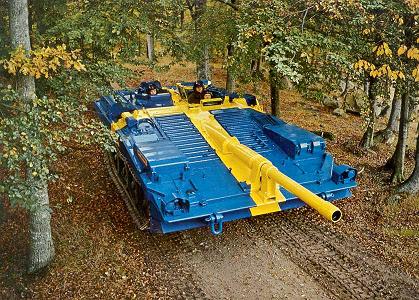
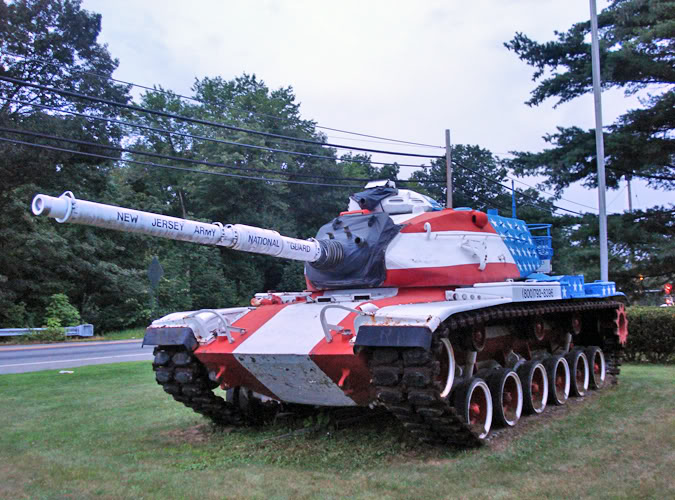
Operationally, however, not so much. Even ‘nose art’ equivalents were pretty rare. We tankers love our mounts, we name them, we take care of them, they take care of us in return. But unlike airplanes, any art we put on a tank is liable to get covered up or damaged by simple wear and tear. Plus, of course, do you really want brightly coloured things on the side of your tank saying “I’m not actually a bush, I’m a tank pretending to be a bush”? The big white star in WWII was bad enough. On rare occasions, though, you might see something, such as Abrams’ Thunderbolts.
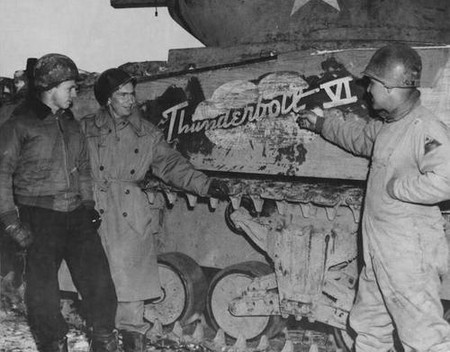
By and large, though, tanks are artistically boring to look at.
There was one notable exception, however, and that exception was in the Korean War. The M4A2E4 “Ripper” available beginning Thursday on WoT Xbox is an homage to this exception.
First, we’ll acknowledge the Elefant in the room. (Elefant. Geddit?). No M4A2E4s were painted up in this scheme. Actually, no M4A2E4s even saw service in Korea. If you want to know more about the background to this particular vehicle type, please swing over and check out my article about it. http://worldoftanks.com/en/news/21/The_Chieftains_Hatch_M4A2E4/
That said, the schemes were applied to a number of vehicles, and the units were given, understandably, some latitude as to how to do it. They were basically told ‘go paint tiger faces on your tanks’.
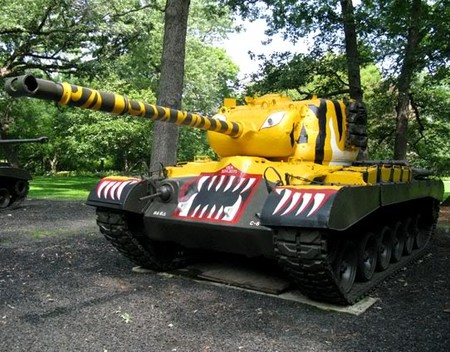
The backstory is that someone in the US military’s Psychological Warfare section figured out that in the Chinese zodiac calendar, 1950/51 was the year of the metal tiger. With the Chinese Army coming over in rather large numbers in the second half of 1950, and pushing the UN forces back down the peninsula, the bright idea was that if they painted up their tanks with tiger faces, it might have an effect on any superstitious Chinese peasants in the People’s Liberation Army.
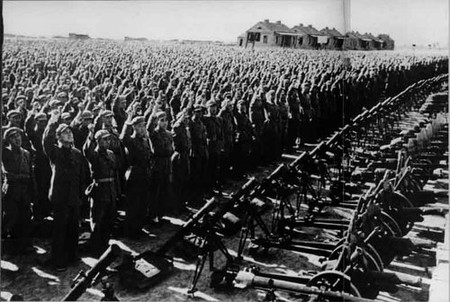
Superstitious conscripted peasants seen in China before pushing the UN forces back
I have not encountered as yet any documentation showing how effective it was. I have similarly not encountered any documentation showing how effective the US soldiers thought it was. Frankly, I can’t imagine it would have had any particular effect. A tank coming at you is scary in and of itself, regardless of what’s painted on the front of it. What I am fairly confident of, however, is that the US tankers would have taken to the instructions with gleeful abandon regardless of their opinion of the effectiveness. Face it, we don’t often get official authorization to completely un-militarify our tanks and paint them up like that.
There was actually precedent for this, dating back to late 1944/early 1945, and the Chinese and American 1st Provisional Tank Group. They didn’t have many Shermans, but they did put some Tiger faces and a claw on them.
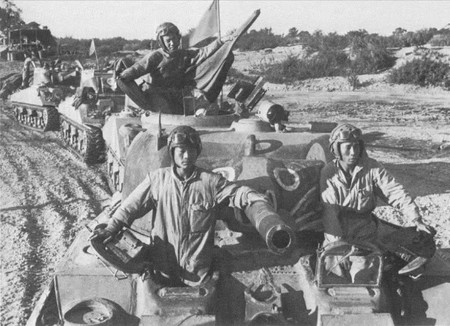
Chances are, though, that nobody had heard about this small unit in an unfamiliar part of the war.
Though there was no standardization of paint schemes in the Korean War, there was usually some standardization within companies.
Rice’s Red Devils was the name taken up by C/89th Medium Tank Battalion, attached to the 25th Infantry Division, after the company commander, Captain Rice. They took a rather minimalist approach, with just eyes and mouth.
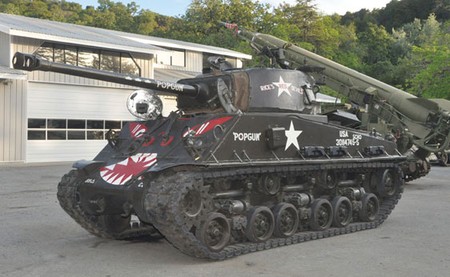
A somewhat more extreme position was taken by the 3rd Engineer Battalion, 24th ID.
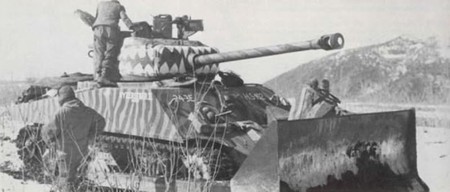
A compromise can be found on this Patton.
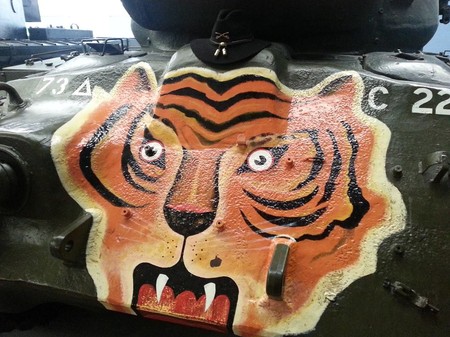
Though evidently not particularly common, M24s were not left out of the fun. See this one from 79th Tank Battalion.
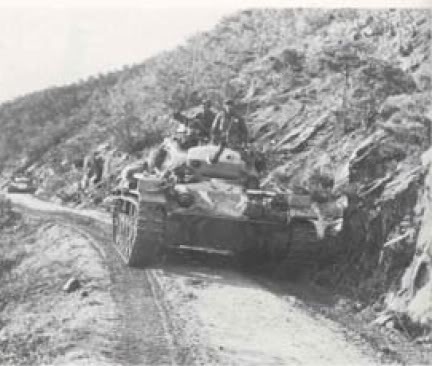
There was a small flaw with the timing on all this, however. By the time that the concept had been thought out, approved, and paint applied (God knows where bright yellow paint was to be found in the US Army’s supply system in Korea), the tanks were not really used until March of 1951 at which point the calendar had turned into the year of the rabbit. Fierce rabbits, are, of course, a silly thing to paint onto a tank, so I guess they stuck with the tigers.
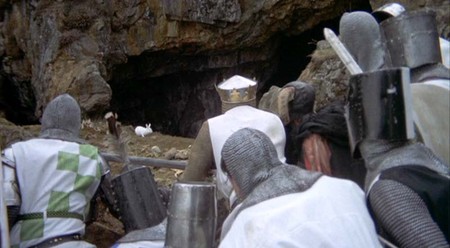
I mean, really, why would anyone be afraid of a rabbit?
Anyway, the operation which finally committed all these tiger tanks to the assault was Operation Ripper, the push to recapture Seoul again, hence the name of the scheme as a Ripper scheme.
As for the exact pattern shown on our M4A2E4, the closest prototype was worn by the 6th Tank Battalion, equipped with M46s.
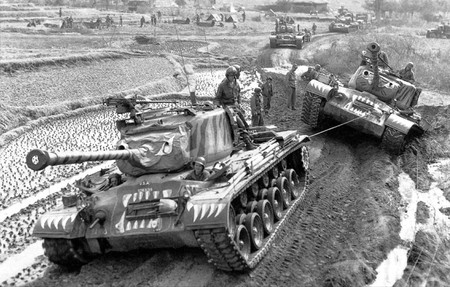
The also make great prototypes to model. If you are an Xbox tanker, enjoy roaming around in your scary tank!
